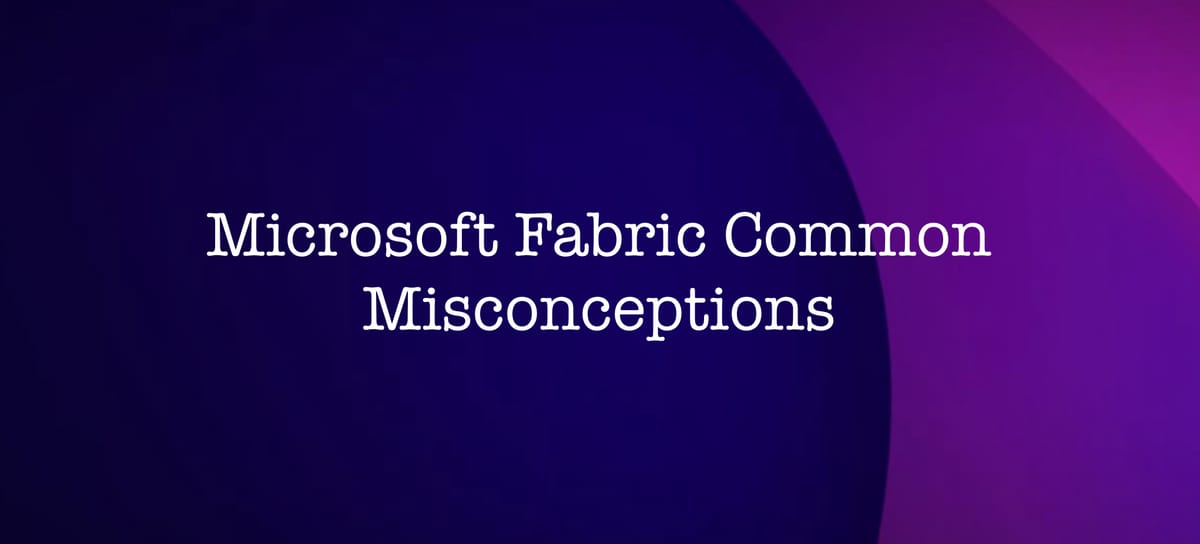Common Microsoft Fabric Cost Misconceptions

Fabric has came under its share of scrutiny since going generally available in November 2023, and much of it was or is still worth consideration. Specifically, concerns around the maturity of version control or CI/CD (in preview), some observed delays in SQL Analytics Endpoint synchronisation are often reference, and the pricing model being subscription or capacity-based rather than purely consumption-based are probably the points I see most commonly referenced.
Though these are all fair, and hopefully being addressed, it's also with addressing some common misconceptions, in this case associated to capacity features, cost, and performance:
- The minimum cost for utilising PowerBI embedded is “high”: at launch, embedded was limited to F64 capacities, but that’s no longer the case and embedding is possible with any F SKU. I’ve labelled this misconception as “high” cost as it tends to be one of two figures quoted - either the F64 capacity cost, or the embedded pricing. Ultimately, this means the actual minimum cost could be as low as a couple of hundred USD per month compared to anywhere from 800 USD (EM1) or 8,000 USD (F64)
- F64 is required for fully-featured fabric: This is partially true in that all features are available on F64 and above capacities, but previously this included smaller capacities not having features like trusted capacities or managed private endpoints, but all F SKUs are mostly at feature parity. The only feature addition at F64 and above is Copilot
- All Fabric experiences cost the same for like-to-like operations: William Crayger shared the most vivid example of this that I can remember, which describes seeing a more than 95% reduction in consumption units running the same process for ingesting data with a spark notebook compared to a low-code pipeline. I haven’t seen quite so dramatic results in my experience, but I have observed, for specific activities, up to a 75% reduced cost. That is to say, not all experiences will result in the same consumption
- Capacity performance is better for larger capacities: some small differences can be observed due to smoothing & bursting but, as outlined here by Reitse, even comparing the smallest F2 capacity to F64, performance is largely the same
- Fabric is "more expensive" than expected, or than PowerBI at scale: as with everything, this depends on many factors but, in terms of perception, it's worth bearing in wind that the F64 capacity cost is equivalent cost (when reserved) to a PowerBI Premium capacity (at $5k p/m)
- The F64 SKU cost, including free PowerBI access for report consumers, is best fit for 800 or more users: This comes from the fact that otherwise you would be paying for around 800 (x 10 USD) PowerBI licenses for report viewers. However, it doesn’t factor in capacity reservation (~40%) savings nor any licensing covered through enterprise E5 licenses. In real terms, the driving factor for capacity selection needs to be predominantly data requirements, but considering purely licensing costs for report viewers, the crossover point for cost will vary. It could be higher (if E5 licenses are considered) or lower (if the capacity is reserved, more like 500)
Now, this isn’t to say that additional considerations such as portability, version control, or workload management and prioritisation aren’t worthwhile considerations, but I think it’s good to see barriers to entry being removed for new users and a mostly consistent experience for all capacities.